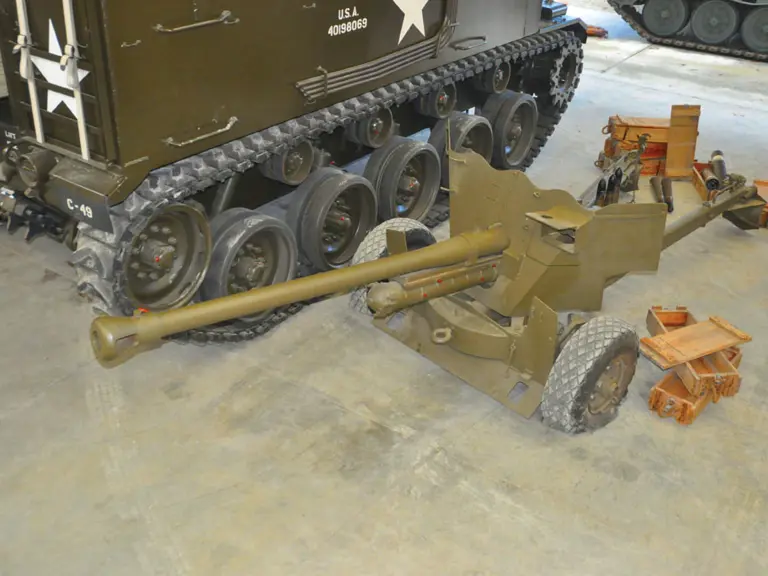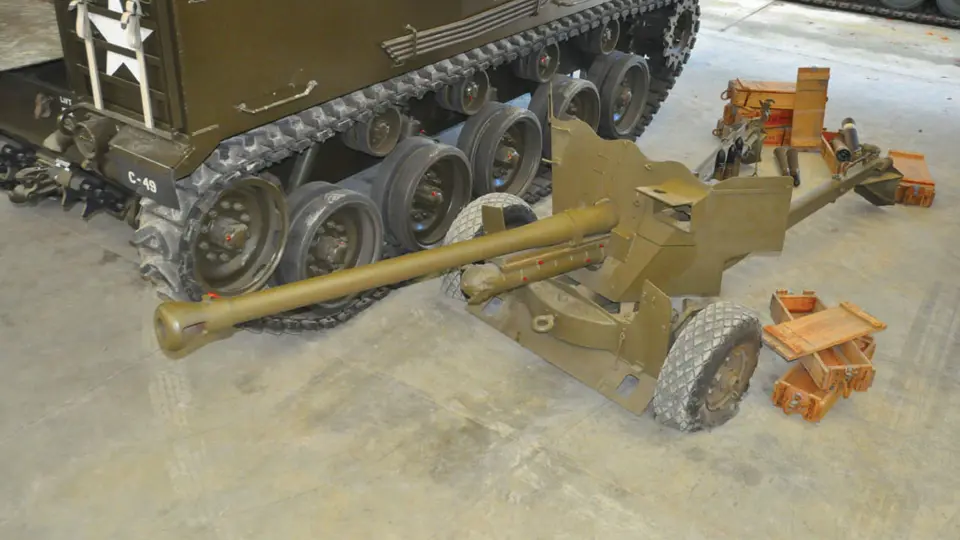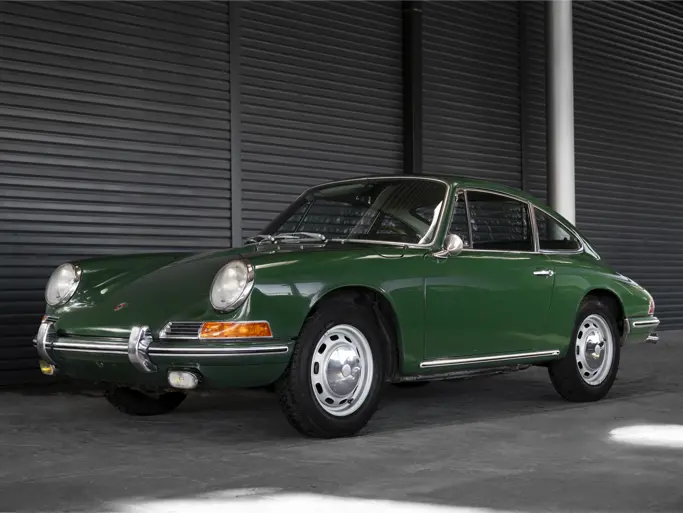 | Portola Valley, California
| Portola Valley, California
Weight: 1.25-tons (1,143-kg)
Length: 9' 9” (2.97-m) barrel length
Width: 6' 0” (1.81-m)
Height (top of gunshield): 4' 2” (1.28-m)
Crew: 5
Caliber: 57-mm
Elevation: -5- to +15-degrees
Traverse: 45-degrees right and left
Muzzle velocity: 2,693-fps (820-m/s) AP shot
2,700-fps (880-m/s) HE
4,050-fps (1,234-m/s) APDS
Armor penetration:
AP shot: 74-mm at 1,000-m at a 30-degree angle
APDS: 146-mm at 1,000-m at a 30-degree angle
The gun being offered, 6-pdr anti-tank gun Mk4 gun on Mk 1 carriage was built in Australia in 1942. It is an older restoration. The paint is in excellent condition. The gun traverses and elevates normally. The tires need to be replaced.
The Ordnance Quick Firing 6-pounder anti-tank gun was developed and produced in Great Britain during World War II. Development of the gun actually started prior to World War II as the 2-pdr anti-tank gun was entering production. In 1939, the first 6-pdr anti-tank gun, the Mk 1 was built and test fired and then stored until production orders were placed.
With their defeat in France during the summer of 1940, the British Army was desperate for anti-tank guns as most of their 2-pdrs had been abandoned there. While this would've appeared to be a good time to initiate production of the superior 6-pdr, the threat of German invasion forced the British to continue the production of the 2-pdr. A contract for 400 6-pdr anti-tank guns was approved in June 1940, but was placed on hold until enough 2-pdrs were built to fill the existing need, which would then allow production capability to be freed up. The first production variant of the 6-pdr, Gun Mk 2 on Carriage Mk 1, entered production in November 1941.
The first 6-pdr anti-tank guns saw service with the British 8th Army in North Africa in the summer of 1942. They replaced the 2-pdr anti-tank gun by early and saw service with all British Commonwealth forces for the rest of World War II. Some were transferred to the Soviet Union via Lend-Lease. Along with being produced in Great Britain, they were also built in Australia, Canada and South Africa. The U.S. built them under license and used them with some modifications as the 57-mm Gun M1. The Mk 4 gun, which is the type being offered, had a barrel that was 16-inches longer than the early Mk 2 and was equipped with a muzzle brake. Some minor carriage modifications were also done during the production run.
The 6-pdr remained in service with the British Army until 1951. In addition to British Commonwealth countries, the 6-pdr was used post-war by Israel, Ireland, the Netherlands and Pakistan.
Transport Cost to Storage: $660





